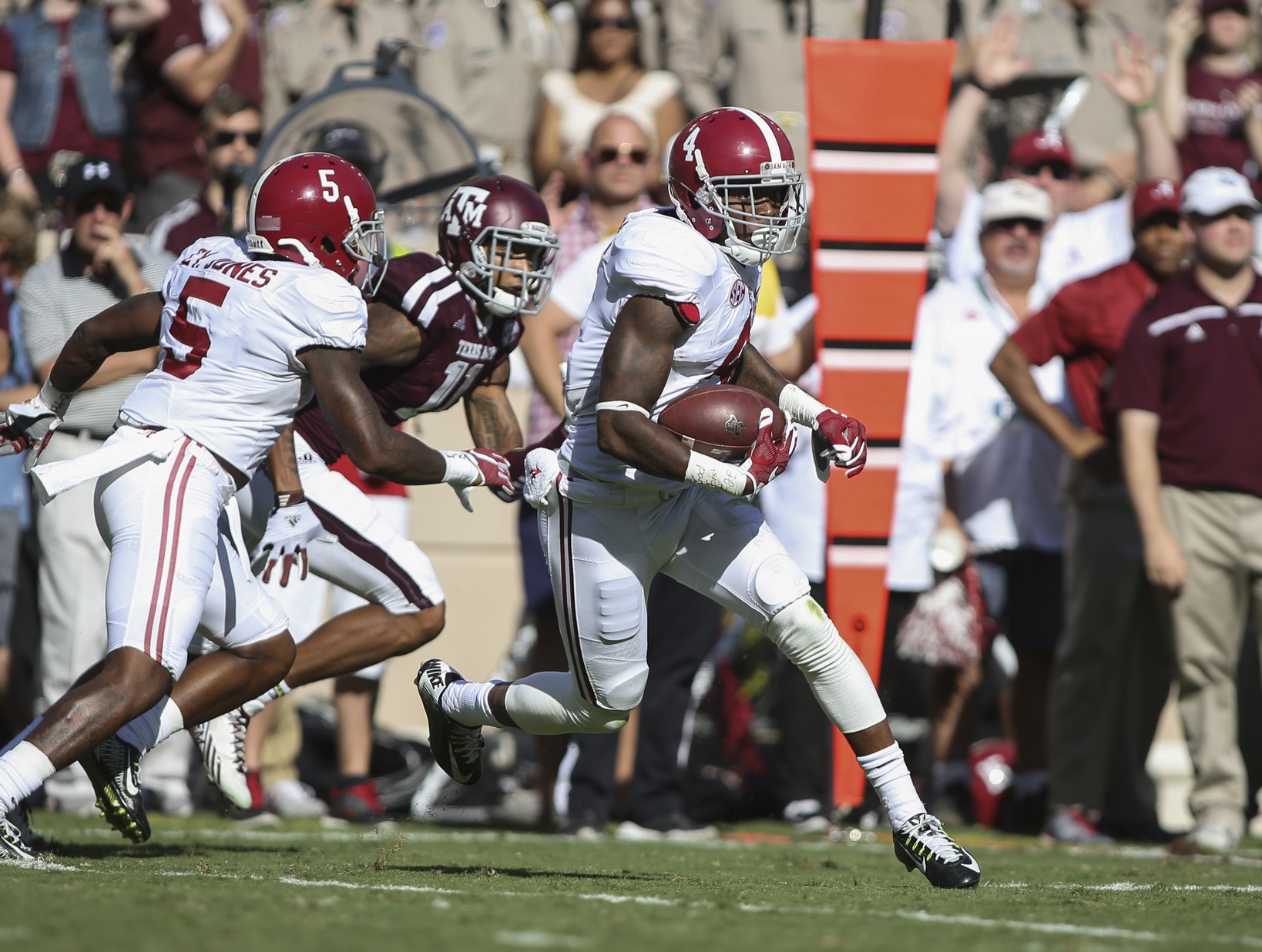
Why moving Eddie Jackson to safety is paying dividends for Alabama
By Will Heath
Published:
“It’s a lot of fun. There’s a lot more action at safety, and I’m enjoying getting these picks.”
– Alabama safety Eddie Jackson
Alabama defensive back Eddie Jackson is enjoying something of a career renaissance this year. The junior — often picked on as a cornerback in 2013 and ’14 — moved to safety this spring in an effort to shore up the position.
It’s worked out well so far.
Jackson has five interceptions and a forced fumble (and recovery) through seven games. He has returned two of his picks for touchdowns, and another — the fourth-quarter theft against Arkansas — essentially slammed the door on the Hogs’ chance for an upset.
The transition has been remarkable for Jackson, who started sparingly as a freshman, then returned from an ACL injury in only five months to start 10 games as a sophomore. It was not his best — Jackson did post an interception and a forced fumble in 2014, along with 41 tackles, but his two most memorable plays from that season came in a November meeting with Auburn, when Sammie Coates ran so far past him that Jackson was barely in the frame by the time Coates caught the ball.
The decision to move Jackson from corner to safety prior to the 2015 season spoke to the Tide’s depth at one position and lack of it at another. The Tide had lost Landon Collins, Nick Perry and Jarrick Williams from the 2014 team and would enter 2015 without much experience at safety. Coach Nick Saban initially referred to the move as “an experiment,” and his teammate — fellow corner moved to safety Geno Matias-Smith — said Jackson was initially “unsure about it.”
“But now, he’s enjoying it. … His tackling has improved a lot. He’s definitely enjoyed the change.”
– Alabama safety Geno Matias-Smith
Jackson’s breakout success is also a microcosm of Alabama’s exploits defending the pass this season. Through seven games in 2015, the Tide is allowing a mere 5.29 yards per pass attempt, lagging behind only Florida.
It’s worth noting, of course, that those stats are somewhat skewed by Alabama’s nightmarish performance at home against Ole Miss, which racked up 341 passing yards (9.7 yards per attempt). You may remember the most famous pass from that game bouncing off an Alabama defender’s helmet for one of the more ridiculous TDs in college football history.
From a strategic standpoint, having Jackson at safety gives Alabama several competitive advantages. Because the majority of the offenses Alabama — and really, everybody — faces these days are spread oriented, the ball is in the air often. Alabama’s typical “base” defense is actually its “nickel” (5 DBs) or “dime” packages (6 DBs).
Even though Saban was considered something of a blitz guru when he first arrived in Tuscaloosa, he actually prefers to pressure the passer with three or four rushers. He would rather control the line of scrimmage and trust his defensive backfield to cover the other team’s skill players. It’s far more complicated than that, of course, but those are the basics.
In base packages, spread teams often create bad one-on-one matchups with the defense’s safeties and linebackers, traditionally weaker in coverage than cornerbacks. But what Alabama has found in Jackson — and Matias-Smith, to be fair — is someone with “corner skills” lined up at safety. In its dime look, the Tide can in fact play 6 DBs with corner coverage skills.
Judging by the past few weeks, it’s a big advantage for the Tide.
Will Heath is a contributing writer for Saturday Down South. He covers SEC football.







